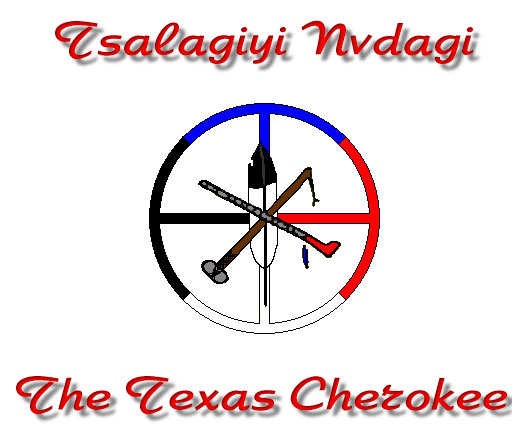An Ani-Tsalagi Story
By: Chief D. L. “Utsidihi” Hicks
Hilahiyu, “Long Ago,” when the Ani-Tsalagi, sometimes called the Cherokees, and long before the white man and the black man came to our mountains, there lived an awful monster called Nvyvunuwi, “Clad of Stone,” the “Stone Coat.” His coat of stone made him strong against arrows and the war club. Many young warriors had lost their lives in battle against the stone monster. Fire did not bother Nvyvunuwi. Freezing weather did not bother him. He was invincible.
He carried an adolanvsti, “staff made of stone,” he used to seek out people to eat them, for this monster of our mountains was a cannibal. He lived in the forest. Mothers taught their children that they were never to stray far from their towns because no one knew where Stone Coat would appear or where he traveled.
One morning as the sun rose over the mountain tops, the town was disturbed by a young warrior running through the streets, announcing in a loud voice that Nvyvunuwi was a short distance from town, coming down the same trail he had been traveling.
People gathered their children and favorite personal items and prepared to flee the town and leave it to this monster. They had no other recourse.
Some of the brave gathered around an old adawehi, “religious leader,” seeking his advice. This old man of many years as adawehi, was the most powerful and knowledgeable adawehi on either side of the mountains and in any town. He was tall and slender, straight of back and not an ounce of fat on his warrior body. His utsviti, “topknot,” was whispy and gray. All the hair on his person was pulled leaving only his age-thinned eye lashes. His ear lobes hung to his shoulders from the weight of his stone ear rings.
The people waited as he sat in deep thought.
“I need seven young virgins, each in their monthly period. One from each clan. They must be pure of heart and trusting of this old man,” the adawehi finally said.
A surprised, “Ah,” came from them all. The people stood, amazed and confused.
“I need seven young virgins, each in their monthly period. One from each clan. They must be pure of heart and trusting of this old man,” the adawehi repeated.
Each clan found and led a young virgin in her monthly time to represent their people. The young women stood in front of the old adawehi, wearing only their front, leather gatloa uadusulo, “cover the privates.” These seven girls had known the adawehi all of their lives and he had been their teacher. All of these virgins trusted him, as had their mothers, grandmothers, and their mothers before them.
He took them to the river where they performed the ceremony of purification called atawetiyi, “go to water,” where they dipped under the water seven times. After the ceremony was performed, he led them to the edge of the town where the trail led into town. He spread them along the trail, several feet separating them. He told them that they were in their time of the month and the monster would not come close to them. Nvyvunuwi could not stand the smell of the blood of a virgin during her time. The girls trusted the old adawehi and they would stand their ground. The town and their people depended upon them.
Nvyvunuwi walked down the trail, the stone staff sniffing the air for humans. He was huge and heavy in his step. He scuffed the ground where he walked. He smelled awful. He was a terrible sight to behold.
As the monster clad in stone neared the first virgin, he said, “My daughter, you are in a very bad way.”
The act of coming close to the virgin seemed to weaken him.
When he neared the second girl, he hurried past and said, “My daughter, you are in a very bad way.”
Nvyvunuwi became weaker after passing each girl. By the time he came to the seventh girl, he could barely walk. As he approached her, he said, “My daughter, you are in a very bad way.”
He passed her and fell to the ground, so weak he couldn’t go any further. He was now at the mercy of anyone who wished to do him harm.
The adawehi walked to the prone monster with a group of brave warriors. He said, “I will drive his staff through his neck and pin him to the ground.”
The adawehi pulled the staff of stone from Nvyvunuwi’s weak hand. He raised the staff high and drove it through the monster’s neck and into the ground. The monster let out a loud scream, that weakened to silence after a short time.
“Now, gather the seven sacred woods of our people. We will build a fire over the body of Nvyvunuwi. He has lost his power and he cannot stand against the fire of the seven sacred woods,” the old adawehi informed them.
Each clan brought the sacred wood of their clan and piled it high over the body of Nvyvunuwi. He didn’t move. He lay, stunned and weak.
An adawehi, the Atsilasvti, “Fire Maker,” made a fire of the wood piled high on top of the monster. The old adawehi sat on his bare heals and chanted prayers in a secret language that only the order of the anidawehi understood.
As the fire roared and burned hot, the monster gave out one more loud scream and then lay silent. He was dead.
The fire burned brightly and hot. The fire was so hot that Nvyvunuwi was burned to ash. He was no more. The adawehi took the ashes and poured them into a hole. The last remains of Nvyvunuwi was covered by a huge stone. The stone clad monster was no more. The forest was now safe. Never again would he feast upon the Ani-Tsalagi people.
That night a great ceremony was held in the Gaduyi, “Town House.” The town and the towns of the rest of the nation danced for seven days and nights.
It was the last great act of the old adawehi. His story would be told by every town for generations to come.
The End





